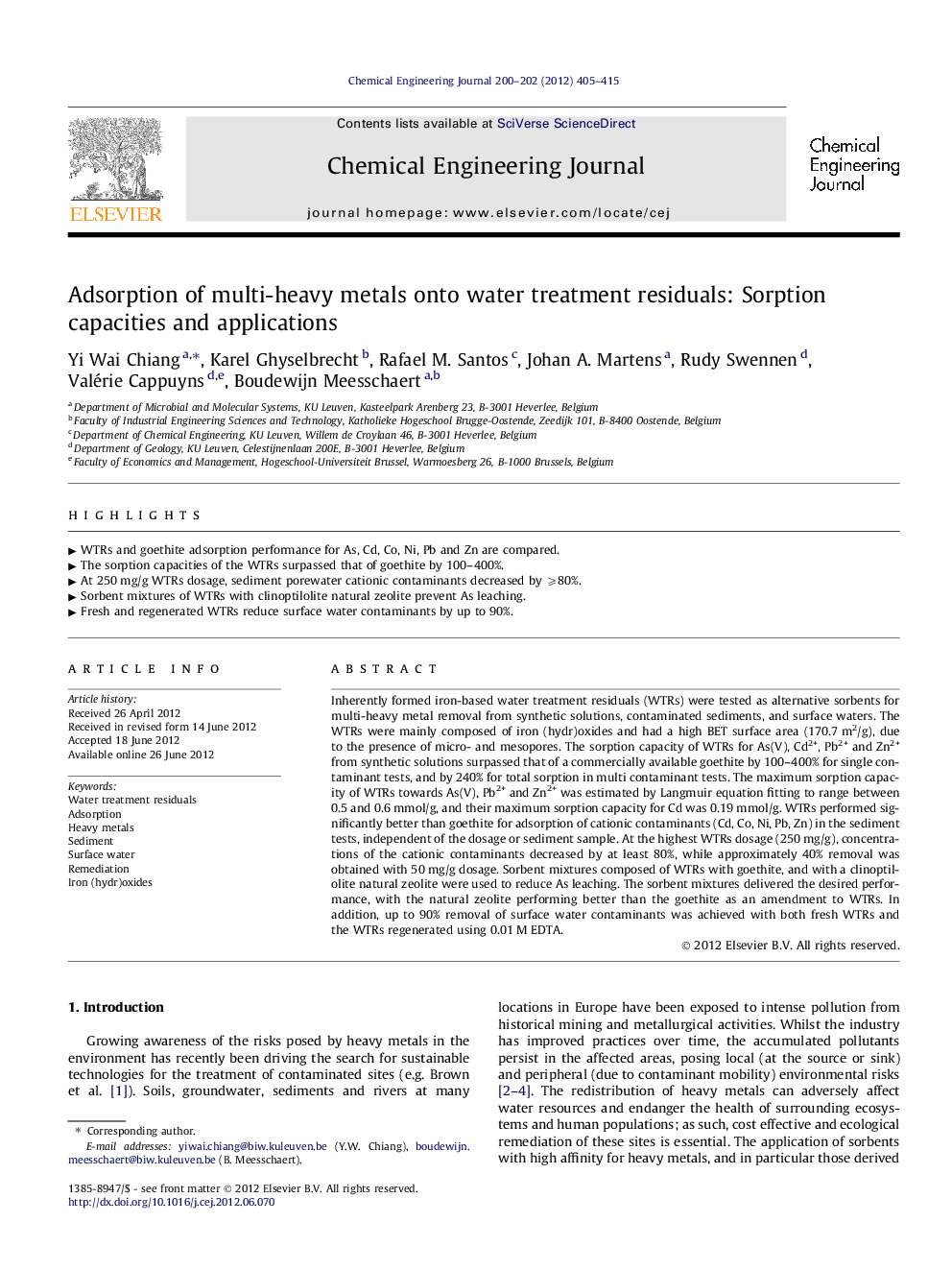| Article ID | Journal | Published Year | Pages | File Type |
|---|---|---|---|---|
| 149563 | Chemical Engineering Journal | 2012 | 11 Pages |
Inherently formed iron-based water treatment residuals (WTRs) were tested as alternative sorbents for multi-heavy metal removal from synthetic solutions, contaminated sediments, and surface waters. The WTRs were mainly composed of iron (hydr)oxides and had a high BET surface area (170.7 m2/g), due to the presence of micro- and mesopores. The sorption capacity of WTRs for As(V), Cd2+, Pb2+ and Zn2+ from synthetic solutions surpassed that of a commercially available goethite by 100–400% for single contaminant tests, and by 240% for total sorption in multi contaminant tests. The maximum sorption capacity of WTRs towards As(V), Pb2+ and Zn2+ was estimated by Langmuir equation fitting to range between 0.5 and 0.6 mmol/g, and their maximum sorption capacity for Cd was 0.19 mmol/g. WTRs performed significantly better than goethite for adsorption of cationic contaminants (Cd, Co, Ni, Pb, Zn) in the sediment tests, independent of the dosage or sediment sample. At the highest WTRs dosage (250 mg/g), concentrations of the cationic contaminants decreased by at least 80%, while approximately 40% removal was obtained with 50 mg/g dosage. Sorbent mixtures composed of WTRs with goethite, and with a clinoptilolite natural zeolite were used to reduce As leaching. The sorbent mixtures delivered the desired performance, with the natural zeolite performing better than the goethite as an amendment to WTRs. In addition, up to 90% removal of surface water contaminants was achieved with both fresh WTRs and the WTRs regenerated using 0.01 M EDTA.
► WTRs and goethite adsorption performance for As, Cd, Co, Ni, Pb and Zn are compared. ► The sorption capacities of the WTRs surpassed that of goethite by 100–400%. ► At 250 mg/g WTRs dosage, sediment porewater cationic contaminants decreased by ⩾80%. ► Sorbent mixtures of WTRs with clinoptilolite natural zeolite prevent As leaching. ► Fresh and regenerated WTRs reduce surface water contaminants by up to 90%.
